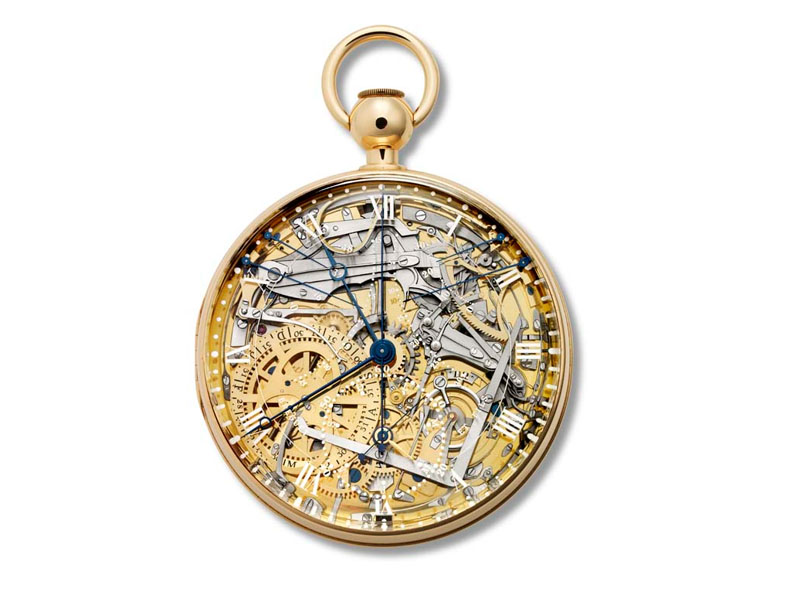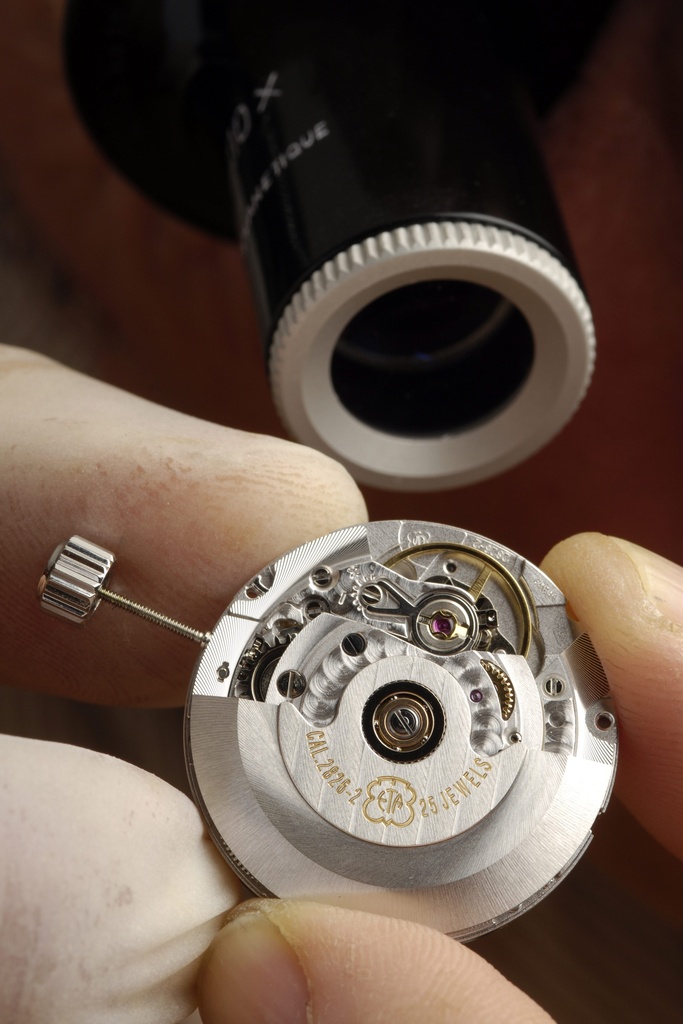Swiss timekeepers defy recession

Despite a strong franc and weak eurozone, Swiss watchmakers are not only braving the storms in the international markets, but have managed to uncork a record year.
According to figures published by the Federation of the Swiss Watch Industry, average annual growth for the industry for 2011 reached 19.1 per cent following a spectacular 16 per cent November increase in sales.
That is over SFr2 billion ($2.14 billion) for the month, or nearly SFr18 billion for the year, with Christmas shopping not included.
The results are tailor-made to boost everyone’s spirits in the run-up to two of the industry’s major events held each January in Geneva, the Geneva Time Exhibition and the Salon Internationale de la Haute Horlogerie (SIHH).
News of the continuing watchmaking boom also comes as relief amidst otherwise gloomy predictions from several quarters, notably the Swiss Economic Institute, which has forecast a mild recession in the coming quarters and scarcely changed growth in 2012.
Several other exporting industries, like paper, textiles and machine-building, continue to be dogged by the strong Swiss franc.
The main reason for the boom is a gradual shift in the industry’s traditional markets. On the one hand, the euro crisis has generated very uneven results on European markets. Germany registered a 60 per cent increase in sales of Swiss watches, whereas Italy saw double-digit decline partly due to a change in fiscal law.
The China syndrome
The slack has been picked up by consumers in Asian markets, which have been growing steadily and vigorously over the years. China has now moved into a comfortable third place behind Hong Kong and the United States, up from seventh place in 2008. The prospects are good.
In light of the higher demand for watches, in particular in the SFr3,000-plus segment, many luxury brands like Zenith, Cartier, Panerai and Swatch Group have been expanding capacities and hiring staff. Investments are also being made in increasing their retail presence in Asia.
Interviewed by swissinfo.ch, Jean-Daniel Pasche, president of the Swiss watchmakers federation, expressed optimism tinged with a word of warning. “China is a safe market, because we have potential to grow there, but are we living in a safe world? We have to be cautious and not ignore other markets.”
Fausto Salvi, CEO of the Perrelet brand, told swissinfo.ch that while the Chinese market is promising, it is not a simple one to conquer. “Brands that are doing well are those that have been established for many years, while young brands are having a more difficult time.”
Perrelet’s strategy aims to open a series of mono-brand boutiques, while relying on his brand’s main market, which is still the US.
Salvi’s concerns are echoed by many in the industry. Jean-Claude Biver is chairman of the board of the luxury brand Hublot and has been a major personality in Switzerland’s watch industry for the past three decades. A year ago, he told Forbes Magazine essentially that the Chinese and Hublot watches were not compatible. Today, he admits that the brand has some catching up to do.
The company has a boutique in Beijing, but the country only accounts for three per cent of the brand’s sales, up from 0.9 per cent a year ago. “So there is a lot of potential for the future,” he told swissinfo.ch.
“On the other hand, we are extremely well established and have a great deal of success in Latin America, for example in Mexico, Brazil, Colombia, and in Russia and India.”
Time to grow
For many of the other Swiss brands, the challenge in these relatively new watch markets is to understand local needs and educate both the consumer and the retailer. This may well be the job of smaller brands and the independents, who often produce niche products highly coveted by collectors.
Marc Jenni, a young watchmaker from Morges, recently toured China with the AHCI, the Academy of Independent Watchmakers. His verdict: “China has a lot of educated buyers and collectors, but also a lot of newbies who want to spend their money on something new and different.”
The right approach, says Jenni, will be to convince the buyers of the authenticity and quality of the products and offer service.
Another independent is Thomas Prescher, known for his extremely complicated and cleverly designed watches that are particularly favoured in Russia (Vladimir Putin apparently wears a Prescher). While he is finding the right partners in Asia to promote his products, there are cultural differences that need to be bridged.
“It needs an enormous amount of effort, understanding and convincing work to build up proper business relationships,” Prescher said. He also warns against concentrating on single markets that can collapse overnight, as Ukraine did.
Watching out
The record results are not an encouragement to return to the heady pre-recession days, with extravagant designs and at times extravagant prices as well.
The boost in demand has come at a certain cost to compensate for the strong franc, says Pasche: “Our members have to reduce margins to remain competitive on the markets, because price is an issue for consumers.”
For Hublot’s Jean-Claude Biver, however, being flexible is the right approach. “We have become a lot more alert regarding the various signals,” he told swissinfo.ch. “We have developed a strategy that will permit us to accelerate quickly, but also, paradoxically, step on the brakes quickly as well.”
Biver also notes that demand is not the only reason for the Swiss watchmakers’ excellent performance.
“The industry has managed to refocus rational use of the watch as a timekeeper, and make it a status symbol,” he said, adding with unconcealed pride: “The watchmaking industry has succeeded in seizing the lion’s share of the markets because it is virtually without any foreign competition.”
It might be worth remembering that China already has a watchmaking industry.
The last peak year was 2008, which capped a run of 19 quarters of steady growth. Total sales for that year reached SFr17 billion. The number of watches exported in all (quartz and mechanical) was 26.1 million.
The value of the exports was carried mainly by steel watches at SFr6.4 billion. Values for watches made of precious metals stood at SFr5.4 billion and SFr2.2 billion for bimetallic watches (using two different metals, usually steel and gold but not only). Growth in the number of steel units exported, however, was in decline already.
During the recession year 2009, those figures were drastically lower, at SFr13.2 billion, or 21.7 million units. Steel watches remained the leaders in value at SFr5 billion, precious metals watches at SFr4 billion and SFr1.7 billion for bimetallic watches. The year also saw a drop in sales in the US and a rise in Europe and Asia.
In 2010, the markets picked up again. Exported value reached SFr15.1 billion, or 26. 1 million units. Value was spread out as follows: steel, SFr6.1 billion (+22.7%), precious metals, SFr5.3 billion (+17.6%); bimetallic SFr2.5 billion (+50.7%). Asia continued to grow as an importer, while Europe and the US lost ground, reflecting the continuing financial troubles plaguing the two continents.

In compliance with the JTI standards
More: SWI swissinfo.ch certified by the Journalism Trust Initiative













You can find an overview of ongoing debates with our journalists here . Please join us!
If you want to start a conversation about a topic raised in this article or want to report factual errors, email us at english@swissinfo.ch.